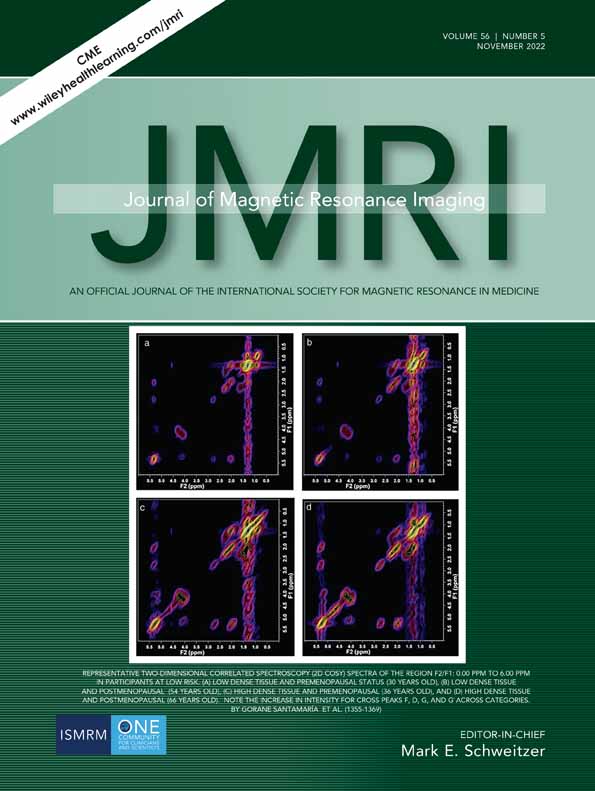Preliminary Study on Quantitative Assessment of the Fetal Brain Using MOLLI T1 Mapping Sequence
Fenglin Jia and Yi Liao contributed equally to this work and should be considered co-first authors.
Haibo Qu and Gang Ning share corresponding authorship.
Abstract
Background
Prenatal quantitative evaluation of myelin is important. However, few techniques are suitable for the quantitative evaluation of fetal myelination.
Purpose
To optimize a modified Look–Locker inversion recovery (MOLLI) T1 mapping sequence for fetal brain development study.
Study Type
Prospective observational preliminary cohort study.
Population
A total of 71 women with normal fetuses divided into mid-pregnancy (gestational age 24–28 weeks, N = 25) and late pregnancy (gestational age > 28 weeks, N = 46) groups.
Field Strength/Sequence
A 3 T/MOLLI sequence.
Assessment
T1 values were measured in pedunculus cerebri, basal ganglia, thalamus, posterior limb of the internal capsule, temporal white matter, occipital white matter, frontal white matter, and parietal white matter by two radiologists (11 and 16 years of experience, respectively).
Statistical Tests
The Kruskal–Wallis test was used for reginal comparison. For each region of interest (ROI), differences in T1 values between the mid and late pregnancy groups were assessed by the Mann Whitney U test. Pearson correlation coefficients (r) were used to evaluate the correlations between T1 values and gestational age for each ROI. Intraobserver and interobserver agreement was determined by the intraclass correlation coefficient (ICC). A P value <0.05 was considered statistically significant.
Results
Interobserver and intraobserver agreements of T1 were good for all ROIs (all ICCs > 0.700). There were significant differences in T1 values between lobal white matter and deep regions, respectively. Significant T1 values differences were found between middle and late pregnancy groups in pedunculus cerebri, basal ganglion, thalamus, posterior limb of the internal capsule, temporal, and occipital white matter. The T1 values showed significantly negative correlations with gestational weeks in pedunculus cerebri (r = −0.80), basal ganglion (r = −0.60), thalamus (r = −0.68), and posterior limb of the internal capsule (r = −0.77).
Data Conclusion
The T1 values of fetal brain may be assessed using the MOLLI sequence and may reflect the myelination.
Evidence Level
3
Technical Efficacy
Stage 2
Conflict of Interest
None.




